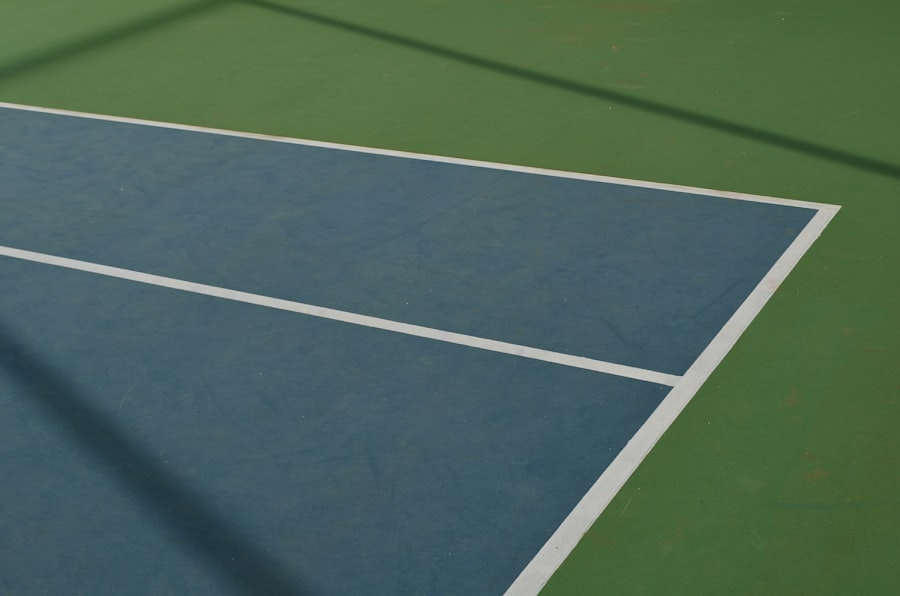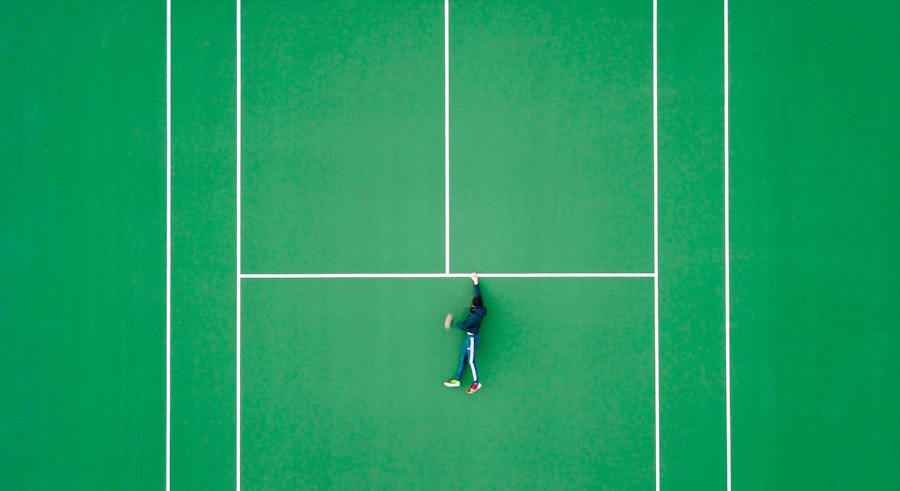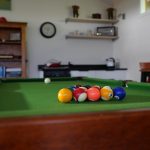Mastering the Art of Badminton: Tips for Success
Description
Badminton is a fast-paced racquet sport that has gained immense popularity worldwide, characterized by its unique blend of agility, strategy, and precision. The game is played either in singles or doubles format, with players using a shuttlecock and racquets to score points by landing the shuttlecock in the opponent’s court. The fundamental rules of badminton are relatively straightforward, making it accessible to beginners while still offering depth for advanced players.
The objective is to hit the shuttlecock over a net and into the opponent’s side of the court, ensuring it lands within the designated boundaries. The court itself is divided into two halves by a net, with specific dimensions that vary slightly between singles and doubles play. In singles, the court is narrower, while in doubles, it expands to include the wider sidelines.
Understanding the layout of the court is crucial for players, as it influences positioning and shot selection. The height of the net is set at 1.55 meters in the center, which adds an additional layer of challenge to the game. Players must not only master their shots but also develop an understanding of how to navigate the court effectively, anticipating their opponent’s moves and responding accordingly.
Key Takeaways
- Badminton is a fast-paced racket sport played with a shuttlecock, requiring agility, speed, and precision.
- Good footwork and movement are essential for success on the badminton court, allowing players to reach the shuttlecock quickly and maintain balance.
- Mastering different types of shots, such as clears, smashes, and drops, is crucial for keeping opponents off balance and controlling the game.
- Developing effective strategies and game plans can give players a competitive edge, including understanding opponents’ weaknesses and exploiting them.
- Physical fitness and endurance are key components of badminton, requiring strength, flexibility, and cardiovascular conditioning to excel on the court.
Improving Footwork and Movement on the Court
Developing a Strong Foundation
To improve footwork, players should focus on developing a strong foundation through drills that emphasize lateral movement, quick pivots, and explosive sprints. Practicing side shuffles and crossover steps can enhance lateral agility, while incorporating forward and backward movements will help players cover the entire court efficiently.
Advanced Footwork Drills
In addition to basic footwork drills, players can benefit from incorporating shadow badminton into their training regimen. This involves mimicking game movements without a shuttlecock, allowing players to focus on their footwork patterns and body positioning. By visualizing an opponent’s shots and practicing movement in response, players can develop muscle memory that translates into improved performance during actual matches.
Dynamic Footwork Drills
Agility ladders and cones can be utilized to create more dynamic footwork drills that challenge players’ coordination and speed, ultimately leading to better court coverage.
Mastering Different Types of Shots

A well-rounded badminton player must be proficient in various types of shots, each serving a distinct purpose during gameplay. The fundamental shots include clears, drops, smashes, and drives, each requiring different techniques and strategies. The clear shot is typically used to send the shuttlecock high and deep into the opponent’s court, allowing players to regain their position or create space for subsequent shots.
The drop shot, on the other hand, is executed with finesse and precision, aimed at landing just over the net in the opponent’s front court. This shot can catch opponents off guard if executed correctly, forcing them to scramble forward.
Players should practice varying the speed and angle of their drop shots to keep opponents guessing. The smash is one of the most powerful offensive shots in badminton, characterized by a steep downward angle aimed at overwhelming opponents. To master this shot, players must focus on timing and body positioning to generate maximum power while ensuring accuracy.
Drives are fast-paced shots that travel horizontally over the net, often used in quick exchanges during rallies. Developing proficiency in these shots requires consistent practice to improve reaction time and hand-eye coordination. Players should also work on their ability to transition between different types of shots seamlessly, as this adaptability can be a game-changer during competitive play.
Developing Strategies and Game Plans
| Metrics | Values |
|---|---|
| Market Research | 80% |
| Competitor Analysis | 75% |
| SWOT Analysis | 90% |
| Strategic Goals | 95% |
Strategic thinking is essential in badminton, as it allows players to outmaneuver their opponents and exploit weaknesses in their gameplay. Developing a game plan involves analyzing both one’s strengths and weaknesses as well as those of the opponent. Players should consider factors such as shot selection, court positioning, and pacing throughout a match.
For instance, if an opponent struggles with high clears, a player might focus on utilizing this shot more frequently to gain an advantage. In doubles play, communication and teamwork become paramount. Partners must develop strategies that complement each other’s playing styles while maintaining effective court coverage.
This could involve alternating between aggressive plays and defensive strategies based on the flow of the game. Additionally, players should be prepared to adapt their strategies mid-match; recognizing when an opponent has adjusted their tactics can provide opportunities for counterplay. Analyzing past matches can also be beneficial for developing strategies.
Players can review footage of their games or those of their opponents to identify patterns in shot selection and movement. By understanding these tendencies, players can formulate targeted strategies that exploit specific weaknesses or capitalize on advantageous situations during matches.
Enhancing Physical Fitness and Endurance
Physical fitness plays a crucial role in badminton performance, as the sport demands a combination of strength, speed, agility, and endurance. Players should engage in a well-rounded fitness regimen that includes cardiovascular training, strength conditioning, and flexibility exercises. Aerobic activities such as running or cycling can improve overall stamina, allowing players to maintain high energy levels throughout long matches.
Strength training is equally important for enhancing power in shots and improving overall body control. Exercises targeting the core, legs, and upper body can significantly contribute to a player’s performance on the court. For instance, squats and lunges build leg strength essential for explosive movements during play, while core exercises like planks enhance stability during dynamic movements.
Flexibility training should not be overlooked; incorporating stretching routines can prevent injuries and improve range of motion. Yoga or Pilates can be particularly beneficial for badminton players seeking to enhance their flexibility while also promoting mental focus and relaxation techniques that are valuable during high-pressure matches.
Mental Preparation and Focus

Mental preparation is often an overlooked aspect of athletic performance but is critical for success in badminton. The ability to maintain focus during matches can significantly impact a player’s performance level. Techniques such as visualization can help players mentally rehearse their shots and strategies before stepping onto the court.
By imagining themselves executing successful plays or overcoming challenges during matches, players can build confidence and reduce anxiety. Mindfulness practices can also enhance concentration levels during gameplay. Techniques such as deep breathing or meditation can help players stay present in the moment rather than becoming overwhelmed by external distractions or pressure from competition.
Developing a pre-match routine that includes mental preparation can set a positive tone for performance; this might involve listening to music, engaging in light stretching, or reviewing key strategies. Additionally, resilience is vital in badminton; players must learn how to cope with setbacks or mistakes during matches without losing focus or confidence. Developing a growth mindset—viewing challenges as opportunities for improvement—can foster resilience and encourage players to stay committed to their game plan even when faced with adversity.
Utilizing Proper Equipment and Gear
The right equipment can significantly influence a player’s performance in badminton. Selecting a suitable racquet is one of the most critical decisions a player will make; factors such as weight, balance point, and string tension all play a role in how effectively a player can execute shots. Beginners may benefit from lighter racquets that offer greater maneuverability, while more advanced players might prefer heavier racquets that provide additional power.
Shuttlecocks are another essential component of badminton equipment; they come in various materials such as nylon or feathered options. Feathered shuttlecocks are typically used in competitive play due to their superior flight characteristics but require more care than synthetic alternatives. Players should also invest in quality footwear designed specifically for badminton; proper shoes provide necessary support and traction on indoor courts while minimizing the risk of injury.
Protective gear should not be overlooked either; wearing appropriate clothing that allows for freedom of movement is essential for optimal performance. Additionally, using wristbands or headbands can help manage sweat during intense matches, ensuring that players maintain grip on their racquets without distraction.
Seeking Professional Coaching and Training
While self-directed practice is valuable for skill development in badminton, seeking professional coaching can accelerate improvement significantly. A qualified coach brings expertise in technique analysis, strategic development, and personalized training plans tailored to individual needs. Coaches can identify areas for improvement that players may overlook themselves and provide targeted feedback that enhances skill acquisition.
Group training sessions or clinics can also offer valuable opportunities for players to learn from experienced coaches while engaging with peers who share similar goals. These environments foster camaraderie among players while providing exposure to diverse playing styles and strategies that can enrich one’s own game.
This exposure not only hones technical skills but also builds mental resilience essential for success at higher levels of play. Ultimately, investing time in professional coaching can lead to significant advancements in both skill level and overall enjoyment of the sport.
If you’re a fan of Badminton, you may also be interested in checking out this article about the popular mobile game Banana Kong 1.1. It offers a fun and exciting gaming experience that can be enjoyed on the go. You can read more about it here.
FAQs
What is badminton?
Badminton is a racquet sport played by either two opposing players (singles) or two opposing pairs (doubles), who take positions on opposite halves of a rectangular court divided by a net.
What equipment is used in badminton?
The primary equipment used in badminton includes a shuttlecock (also known as a birdie), badminton racquets, and a net. Players also wear appropriate footwear for the sport.
What are the basic rules of badminton?
The basic rules of badminton include serving diagonally, scoring points by landing the shuttlecock within the opponent’s court, and winning a match by winning two out of three games.
What are the health benefits of playing badminton?
Playing badminton can provide various health benefits, including improved cardiovascular fitness, agility, flexibility, and hand-eye coordination. It also helps in burning calories and promoting overall physical well-being.
What are the different types of badminton shots?
Some of the different types of badminton shots include the clear, drop shot, smash, drive, and the lob. Each shot has its own specific technique and purpose during a game.
What are the major badminton tournaments and events?
Major badminton tournaments and events include the All England Open Badminton Championships, BWF World Championships, Thomas Cup (men’s team event), Uber Cup (women’s team event), and the Olympic Games. These events feature top players from around the world competing at the highest level.





